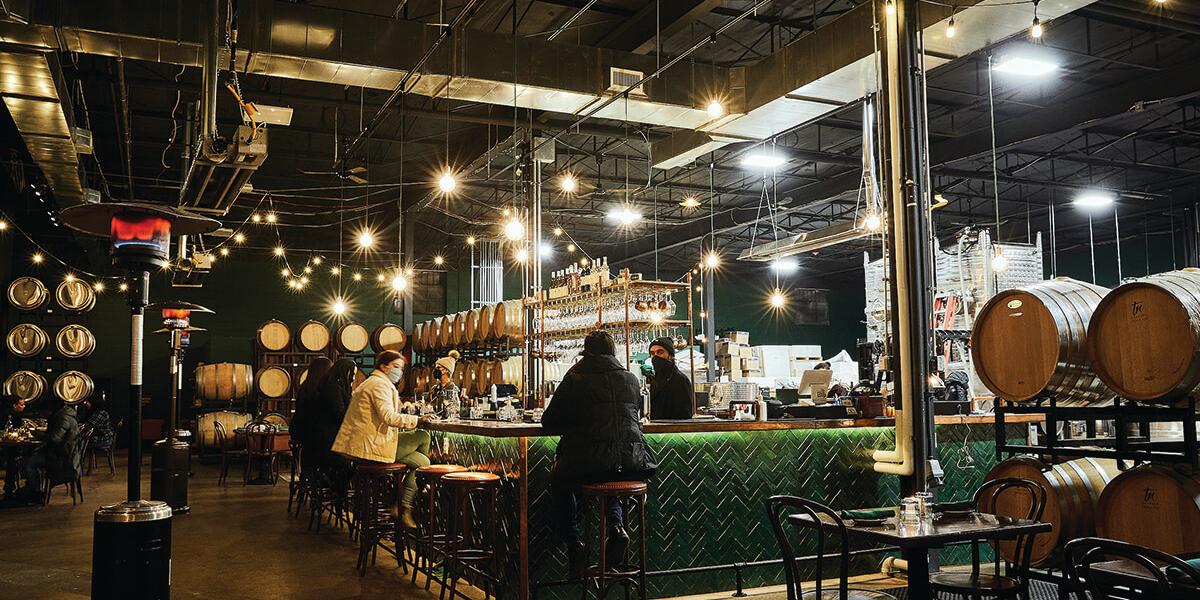Food & Drink
Why a Barstool is Often the Best Seat in the House for a Meal
We round up the best places to belly up to the bar in Baltimore.
Mimi Cooper and her friend Steve Stegner had never eaten at Birroteca, the popular pizza and pasta restaurant in Hampden, so they decided to drop in on a cold night in January. Although their stomachs were growling after seeing Macbeth at The Charles Theatre, they didn’t feel like fussing with the formality of being seated then served at a table in the dining room, which was sparsely occupied. So, to glean the true flavor of the place, they grabbed two stools and bellied up to the bar.
“When we go out, we like to sit at the bar,” Cooper, 79, says. “It’s fun to be close to each other. I think bartenders are sort of fun. They give you quite a bit of attention. It’s cozy.”
After the bartender offers Cooper a taste of a lager she was considering, a courtesy that comes from sitting at the bar, Sam Frank, 31, joins the conversation. He and his fiancée, Grace Jacoby, are sitting catty-corner at the bar sharing a mushroom pizza—the same variety Cooper and Stegner are splitting. The four begin an impromptu chat.
“ALL THE GREAT CULTURES OF HISTORY HAVE HAD A VERY STRONG BAR CULTURE.”
“That is a testament to eating at the bar,” Frank says. “Isn’t it wonderful?” replies Cooper, who dives headfirst into a conversation with her fellow patron. “I love it. I just talked with the couple that preceded you. They were going to Seattle, and we were talking about their trip out West. I love talking to people.”
“You’re not going to have this experience if you’re sitting at a table,” Frank says. “This is why we eat at the bar.”
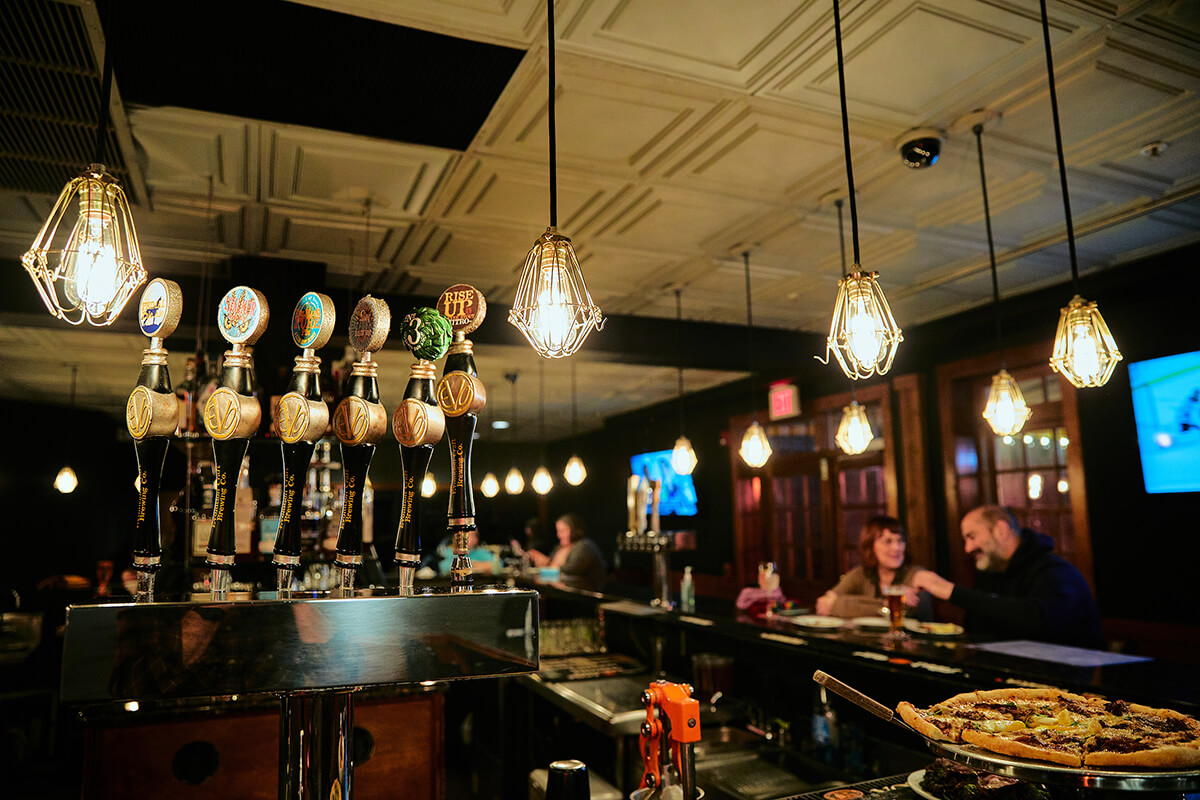
Ask a person chowing down at a bar why they prefer their perch to a seat in a dining room and you’ll hear a surprising array of answers. My first drink arrives faster. So does my second one, for that matter. The food is served a tad bit quicker. I’m closer to the action. Bartenders make fascinating conversation. It’s a more relaxed setting. As for Cooper and Stegner, they say that when they sit side by side rather than across from one another, they hear each other more clearly.
But after these practical advantages are rattled off, almost always another, more primal idea is expressed: Eating at a bar is a communal activity.
“It’s at the very core of what we do as humans, which is be together,” says Enrique Pallares, owner of The Wine Collective in Hampden. “This has political, social, and cultural implications. All the great cultures of history have had a very strong bar culture. They create community.”
Although eating at a bar has been a practice for decades, its popularity has exploded in the last generation, says Gino Cardinale, co-owner of Tark’s Grill & Bar in Lutherville-Timonium and former owner of the late great City Café in Mt. Vernon.
“I think it goes to how dining has evolved…it’s very social now,” he says. “A couple comes in for dinner, they’re not necessarily looking to be by themselves. They like to strike up conversations with other people and interact with the bar staff. I think it has a lot to do with that conviviality of being among other people. I saw this at City Café over the years. The bar was once a place just for drinking, maybe after-work happy hours. It started to segue into [being] more about actual dining. We sell a lot of bottles of our finer wines at the bar. You never used to see that. It’s really taken off.”
Brad Barnes is director of consulting and industry programs at the Culinary Institute of America. The Baltimore native has worked in the business for decades and is bullish on the future of eating at the bar as the pandemic (hopefully) wanes.
“As we come out of COVID, the blending of social and food opportunities will be more and more powerful,” he says. “So I think it’s worthwhile for people to have [the option to] eat in less formal settings.”
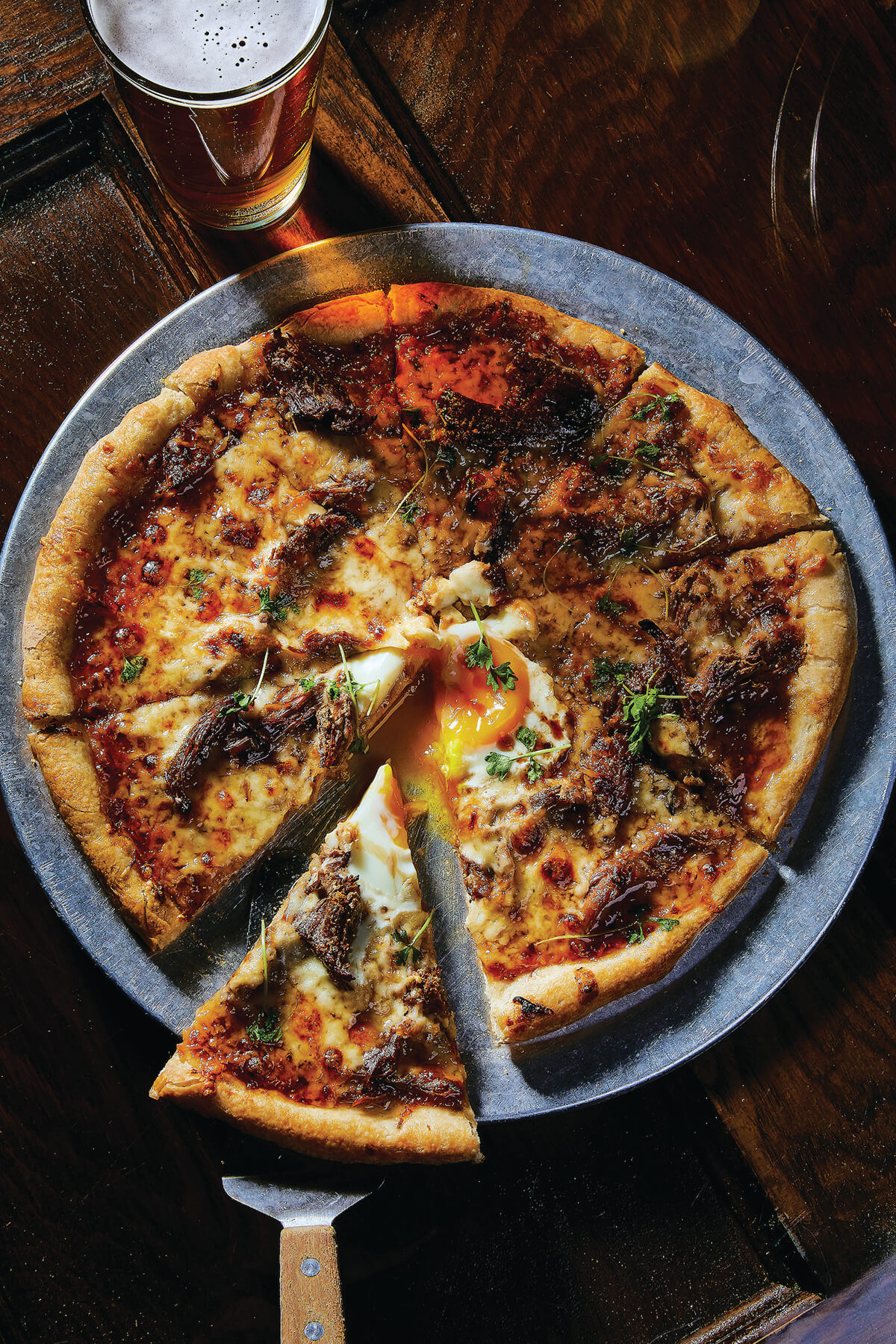
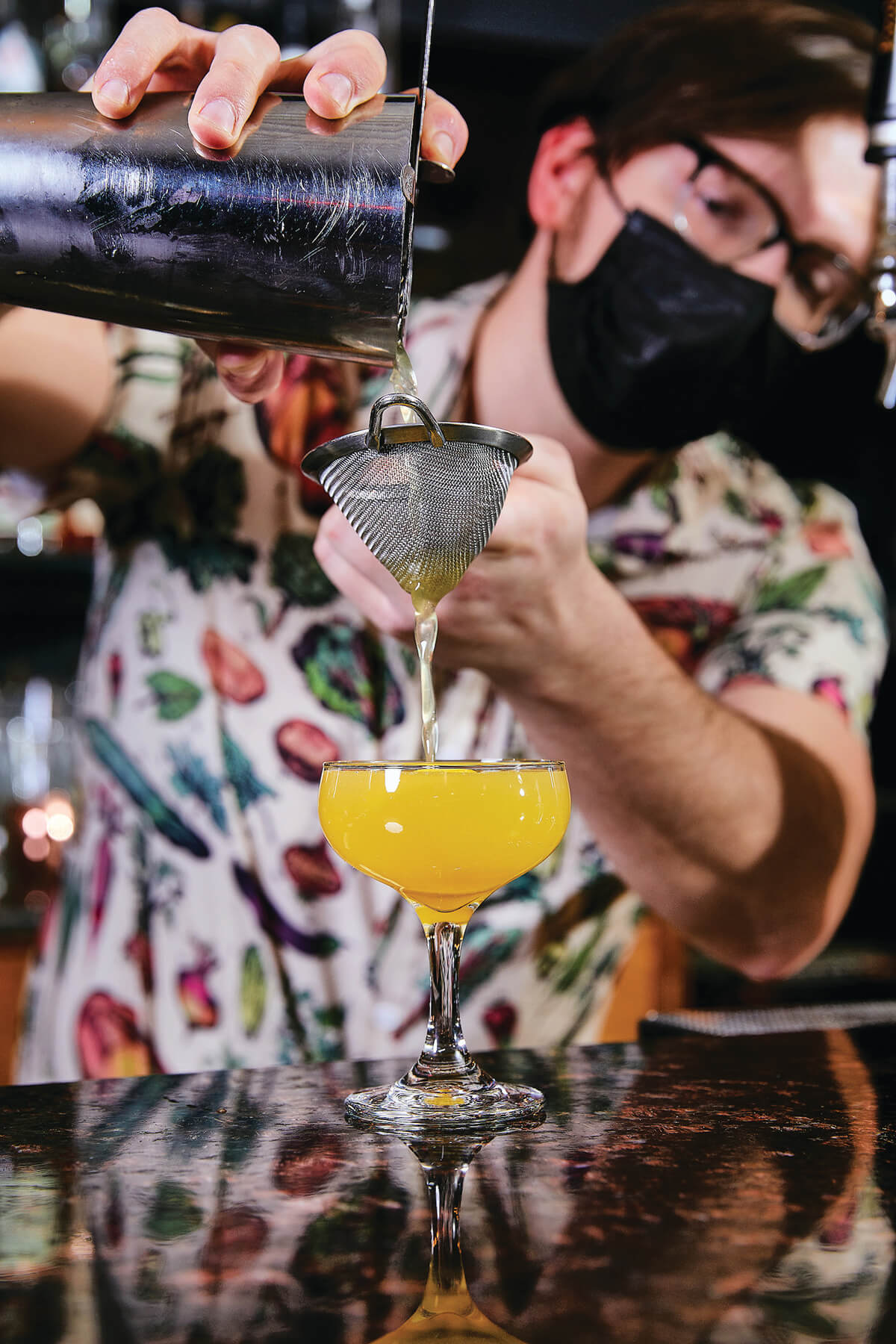
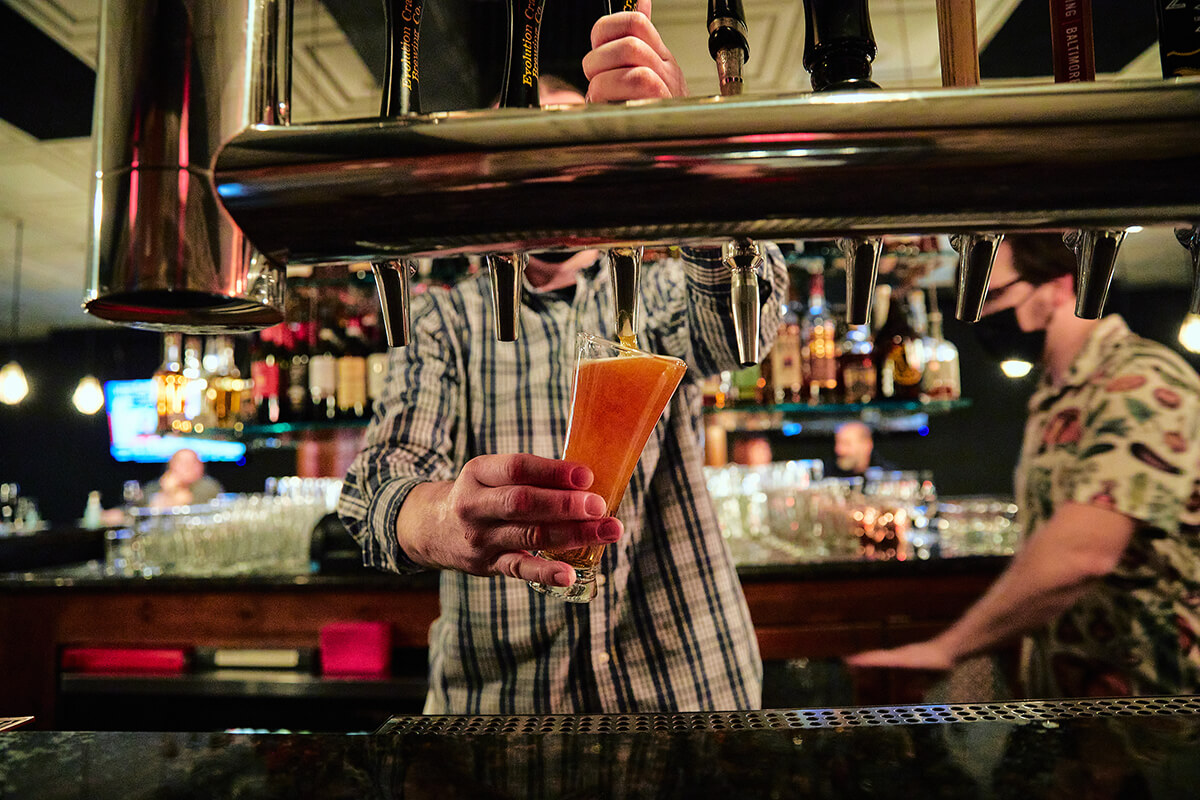
From the fanciest of white-tablecloth bistros to a hyper-casual neighborhood joint, walk into almost any restaurant in town around dinnertime and you’re likely to see people with plates, not just glasses, in front of them at the bar. It’s the perfect way to try a dish or two at a new restaurant without committing to multiple courses. The sense of pressure to order, eat, pay, and promptly leave is decidedly lighter at the bar than in the dining room.
They’re different ecosystems coexisting in the same world.
“If you’re going to go to a decent restaurant, when you have a table, you’re kind of buying that table,” says Jackie Pestka, a chef instructor at Stratford University’s Baltimore campus. “If you’re sitting there and you’ve got three people, and two people order something and one doesn’t, that’s not really a good thing for the restaurant. You can feel self-conscious. You’re almost pushed to get more than you normally would. If you’re sitting at the bar, you can just have an appetizer. I can go to three or four different restaurants in an evening and just grab an app or a small entree and not feel guilty about it.”
Eating at the bar, which has always been a popular option for solo diners, provides a radically different spatial orientation for parties of two or more than sitting around a table. It can create a more casual context for conversation or make periods of silence less awkward. A bartender mixing a colorful cocktail makes for intoxicating theater. A stranger can be invited into a discussion (just don’t talk politics) or you can veg out and watch a game.
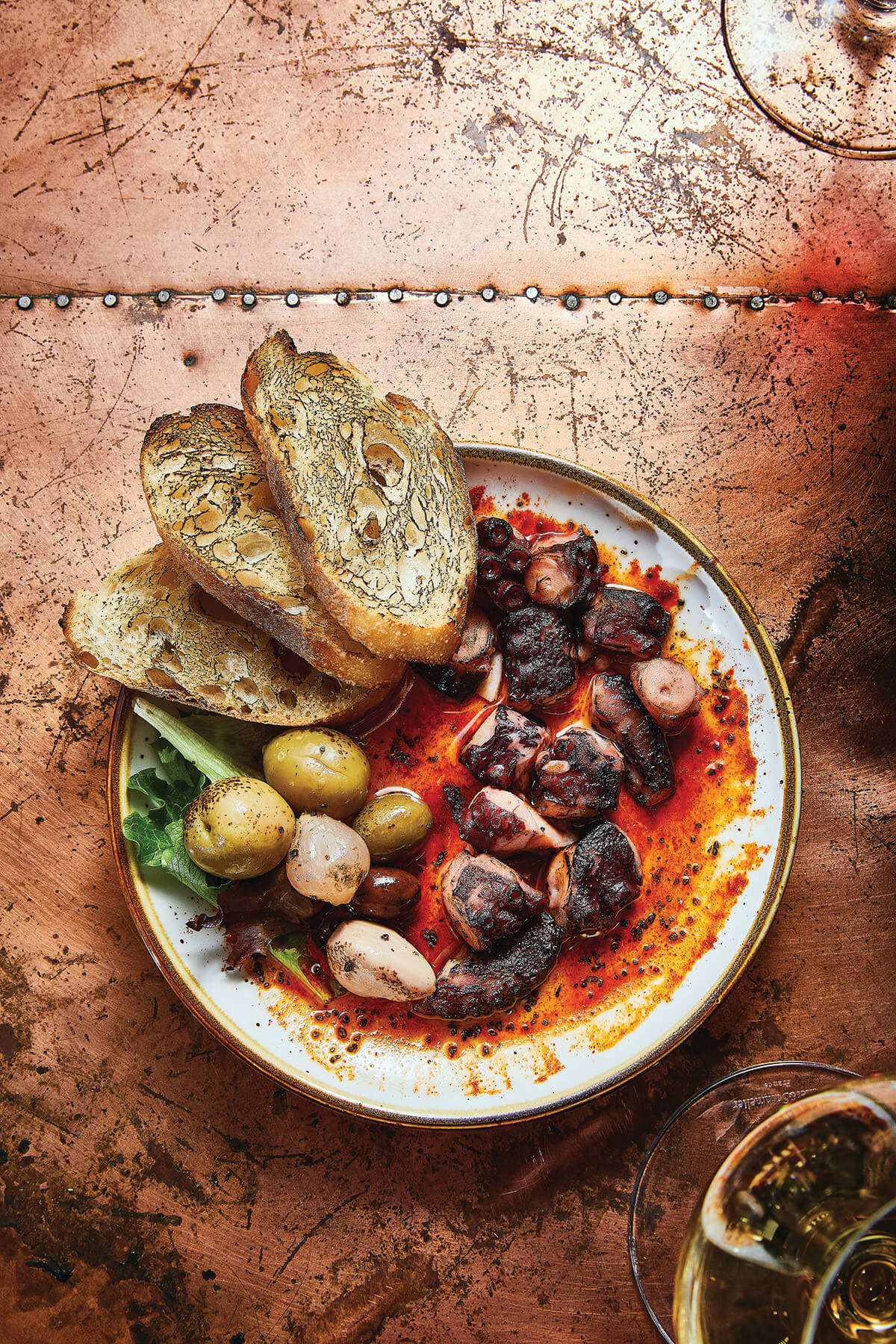
T. Cole Newton is vice president of the United States Bartenders’ Guild. The Washington, D.C., native now lives in New Orleans, where he owns two bars. He’s spent countless hours on both sides of bars.
“When you’re at a table, especially if it’s just one or two people, you’re very much alone for the duration of your meal,” he says. “To dine at the bar, not only are you sharing the bartender’s space, but you’re also sharing that space with everyone else at the bar. It’s essentially like being at one really long table. So there’s a lot more opportunity to have a shared experience. If you’re sitting at a table and you talk to somebody at the table next to you, that’s a very strange thing to do culturally. That’s not the expectation, to lean over to the person at the next table and be like, ‘Hey, what are you eating?’ But if you do that to somebody at the bar, that’s part of what the expectation is.”
That’s exactly what happened at Birroteca. A spontaneous interaction between a young couple and strangers at least a generation older left all with a warm, however brief, memory. It never would have happened in a dining room.
“The bar provides an opportunity to connect with people,” Newton says. “Bars are one of the very few places where those types of random human connections are encouraged.”
Baltimore has no shortage of fantastic restaurants where dining at the bar is welcomed, and provides an entirely different experience than eating in the dining room. Here are eight of our many favorites.
→ Birroteca
Hampden
When it opened in 2012, Birroteca became an instant draw for people in Hampden and beyond. Diners flocked there for its terrific pizzas, pastas, and cocktails, but also because of its inviting atmosphere. Full meals are often enjoyed at its large, four-sided bar.
“We have a pretty regular crowd that comes in and doesn’t even entertain the option of sitting at a table,” owner-operator Mike Moran says. “The bartender often forms a connection with the person they are serving.”
Frank and Jacoby always sit at the bar when they eat at Birroteca. “We don’t like sitting across from each other, it feels like an interrogation,” Jacoby says. “I like touching knees and cuddling up, and the conversations you can have with your neighbors and your bartenders are special.”
Birroteca serves pastas, risottos, and inventive appetizers like beet bruschetta, but it is best known for its pizzas. The Duck Duck Goose, with duck confit, fig-onion jam, fontina, Asiago, balsamic, and duck egg is particularly delicious. Eating one at the bar is a breeze.
Pizzas arrive on elevated metal trays with a spatula that makes helping yourself to a slice easy. There are two TVs, one of which usually is tuned to a (muted) movie. Moran is not a sports fan, and when he eats elsewhere at a bar, he appreciates some non-ball-related programming.
On that recent Wednesday night, Frank and Jacoby were sitting with their backs to the screens, engaged in conversation with each other and occasionally their bartender and their neighbors.
“We had our first date at a bar,” Frank said, “and I’m hoping that even when we get old, we will never get away from sitting at the bar.”
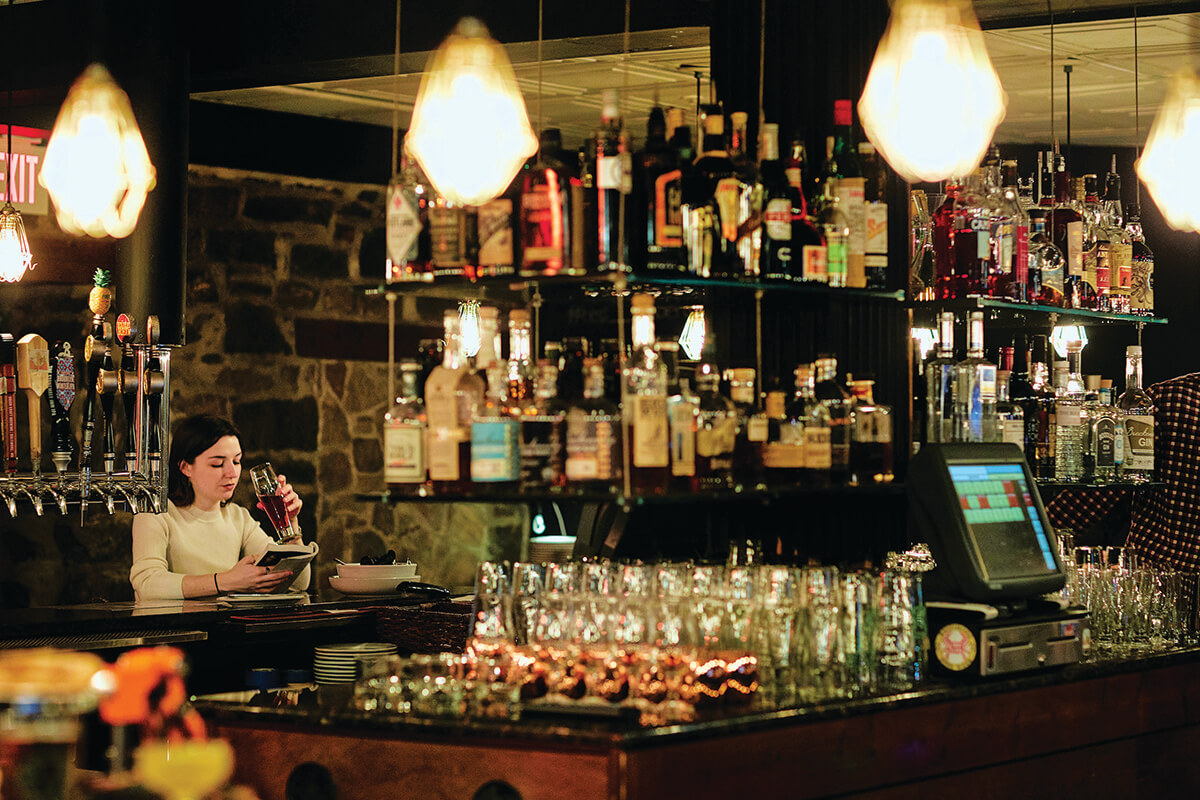
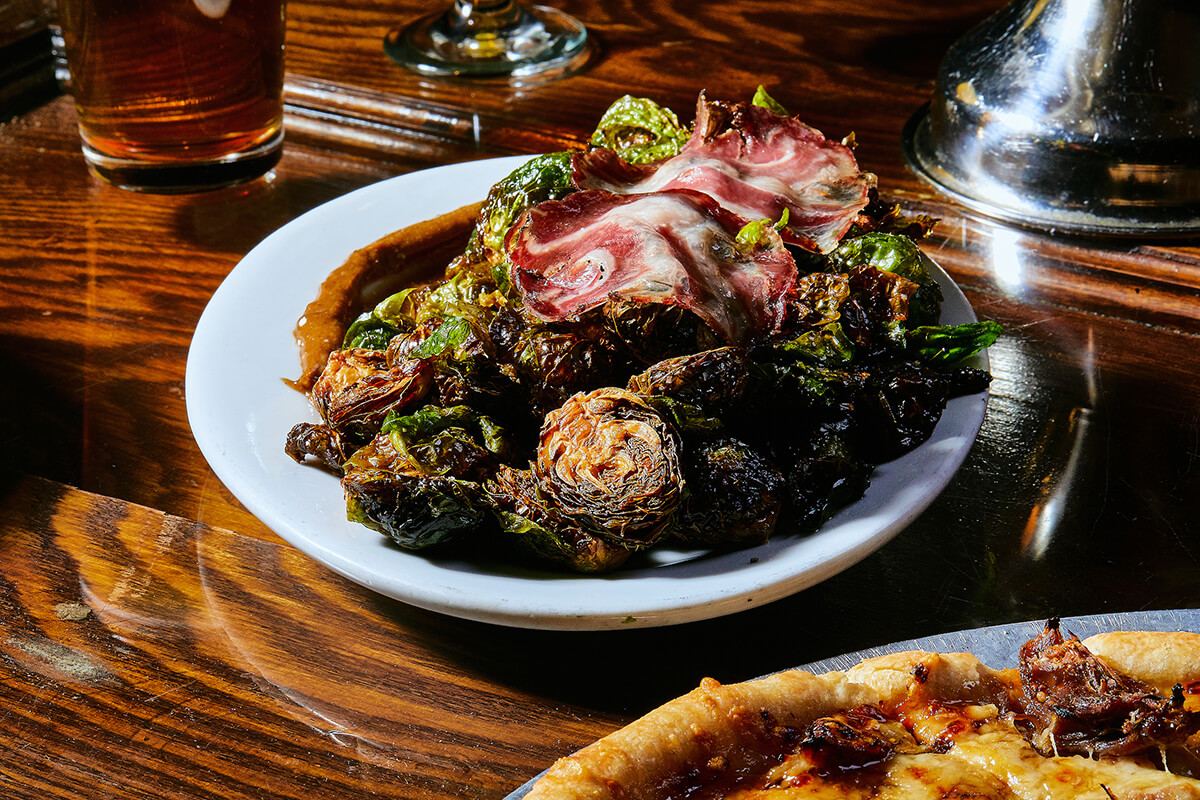
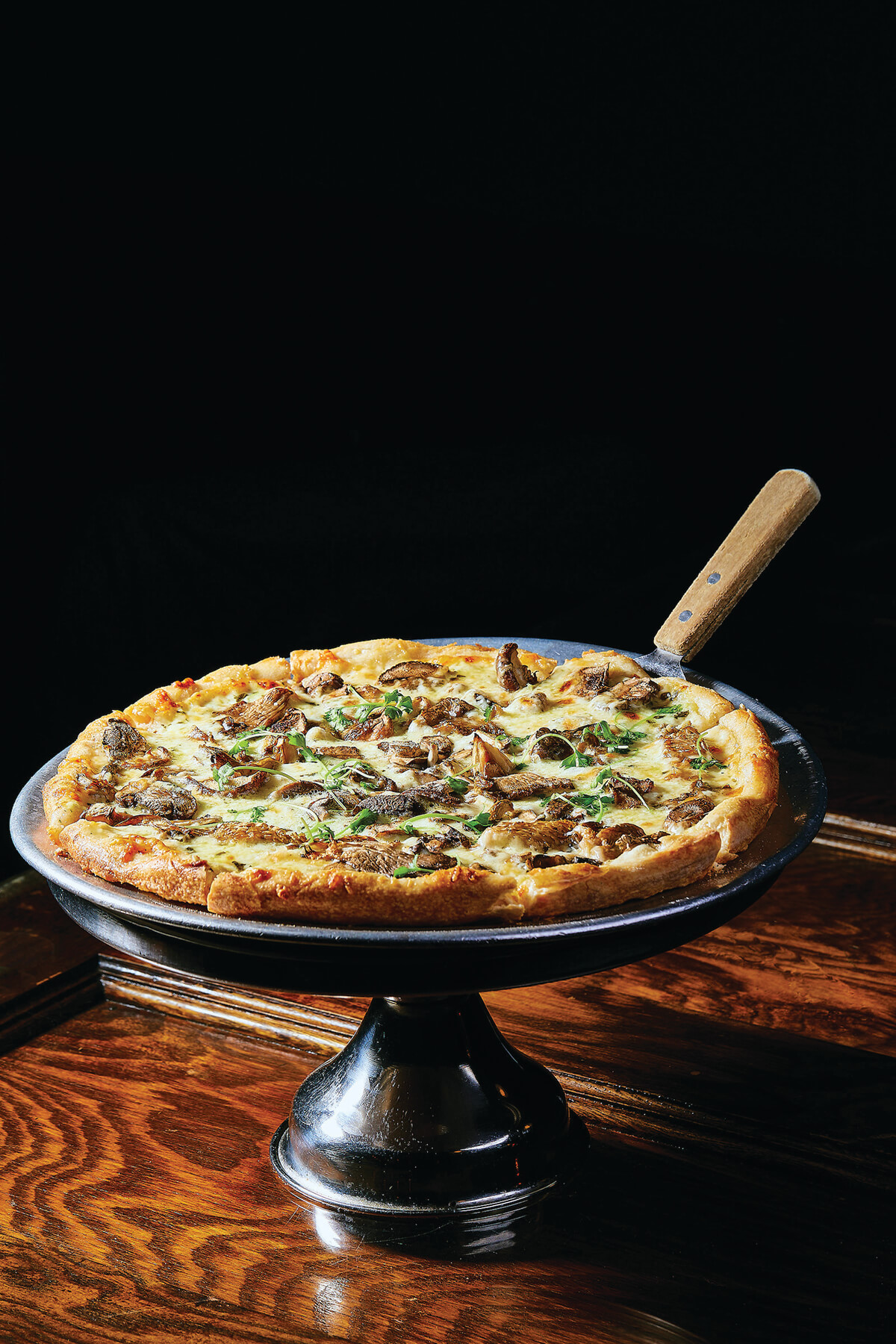
→ Charleston
Harbor East
Eating at the bar is not an option that most people consider when they think of a renowned fancy restaurant. This Harbor East legend is certainly that, but dining at its smallish but attractive bar is a popular pick for regulars, says co-owner Tony Foreman.
“It’s a different social engagement for sure,” he says. “You have dedicated staff that’s not out of your eyesight, and that’s comforting to some people. People have strict rules about whether they want to sit in the dining room or not. There are some that never do. There are some that only do with their spouse. Some guys, when they come in with their spouse, they eat at the bar, but when they come in with friends, they sit at a table.”
Regardless of where you sit, Charleston is not cheap. But whereas in the dining room there is a three-course minimum, at the bar dishes are available a la carte. In theory.
IN THE DINING ROOM AT CHARLESTON, THERE IS A
THREE- COURSE MINIMUM. AT THE BAR, DISHES ARE AVAILABLE
A LA CARTE.
“Most people have the full menu at the bar,” Foreman says. “The reality is once you have one dish, it makes you want another.”
Service is just as polished at the bar as in the dining room. After ordering, folded napkins and tableware are placed on the bar and a complimentary snack—pastry puffs with artichoke and Gruyère soup on a recent night—is served.
Foreman often encourages people who haven’t been to the restaurant to sit at the bar and enjoy a glass of Champagne and a plate of cornmeal-fried oysters during their first visit to acclimate themselves to the kitchen’s style. Although we’ve eaten there often, we took his suggestion on a recent Thursday evening.
His advice—like everything at Charleston—was spot on.
→ Costas Inn
Dundalk
The term “crab feast” usually conjures images of people seated at picnic tables, booths, or long communal tables cracking Maryland’s favorite crustacean. But at this Dundalk restaurant, many people prefer to take mallet to shell while sitting at the bar.
“It’s very common here,” says general manager Peter Triantafilos, whose father, Costas, has owned the place for more than 50 years. “We’ve got a lot of regulars that prefer to eat crabs at the bar. It’s like second nature. Eating crabs is always a social thing. We lay the paper down, give them a couple mallets and they’re good to go.”
Costas Triantafilos estimates that about 10 percent of his customers eat crabs at the bar. That may not sound like a lot, but when you consider that 40 to 50 people can comfortably sit around the massive 12-foot-wide, 42-foot- long wooden bar, that adds up to a lot of blue crabs. The restaurant serves crabs from Louisiana and Texas virtually year-round (just to be safe, in the winter call to check availability before you go), and in the summer can steam 11,000 crabs in a week.
“You might have somebody eating a filet mignon and the person next to them is cracking crabs,” Peter says. “Everybody is going with the flow.”
→ Maggie’s Farm
Hamilton
Want proof of the popularity of the small bar in the back of this Hamilton favorite? When it’s full, regulars often choose a table within eyeshot of the eight stools.
“[They] have a couple drinks and maybe an appetizer, and they wait until it’s empty and then they move,” says chef Abdul Saeed, who owns the restaurant with his wife, Dana.
Tristan Gilbert and his girlfriend, Erin, took friends from out of town to Maggie’s Farm on a Friday night in January. They sat at the bar, where they all devoured Saeed’s delectable Korean pig wings. The appeal is multifaceted, he says.
“It’s quicker to get seated. We can see the taps. We’re beer lovers, so going into a place and being able to shop with your eyes before you even see the menu, that’s always appealing. If I have a question about something, the bartender is usually much more readily available than a server would be.”
And Gilbert just likes the vibe. “It’s definitely a cozy bar,” he says. “It feels like you’re hanging in somebody’s living room.”
THE PRIME RIB HAS A MENU WITH ITEMS, INCLUDING A PRIME RIB SANDWICH, ONLY AVAILABLE TO THOSE SITTING ON STOOLS.
→ The Prime Rib
Mt. Vernon
Don Ervin and his wife, Lachele, arrived at their favorite downtown steakhouse at precisely 5:01, a minute after it opened. As regulars, they know the popularity of eating at its elegant bar, and they were determined to secure their favorite two stools in the corner.
“You meet some interesting people sitting here,” Lachele says. “People that like to eat at the bar are interested in people. Not that you’re looking to meet them, but you’re a little more open to engaging.”
The Prime Rib serves its full menu at the bar, but also has a special menu with items, including a prime rib sandwich and burgers, that are available only to those sitting on stools. Mark “Chavez” Linzey has been bartending there for 15 years.
“We have some people who come in five nights a week and eat at the bar,” he says. “It’s nice having people eat at the bar. They talk to me or watch a game. They talk to the couple next to them. There’s a camaraderie at the bar.”
On one weekday night in January, roughly half the restaurant’s food orders stemmed from the bar, assistant manager Dan Buceti says. The Ervins enjoyed cocktails while they waited for their butterfly shrimp and oysters casino.
“This is our spot,” Lachele says of the restaurant and their regular perches. “It’s a fine dining experience at the bar.”
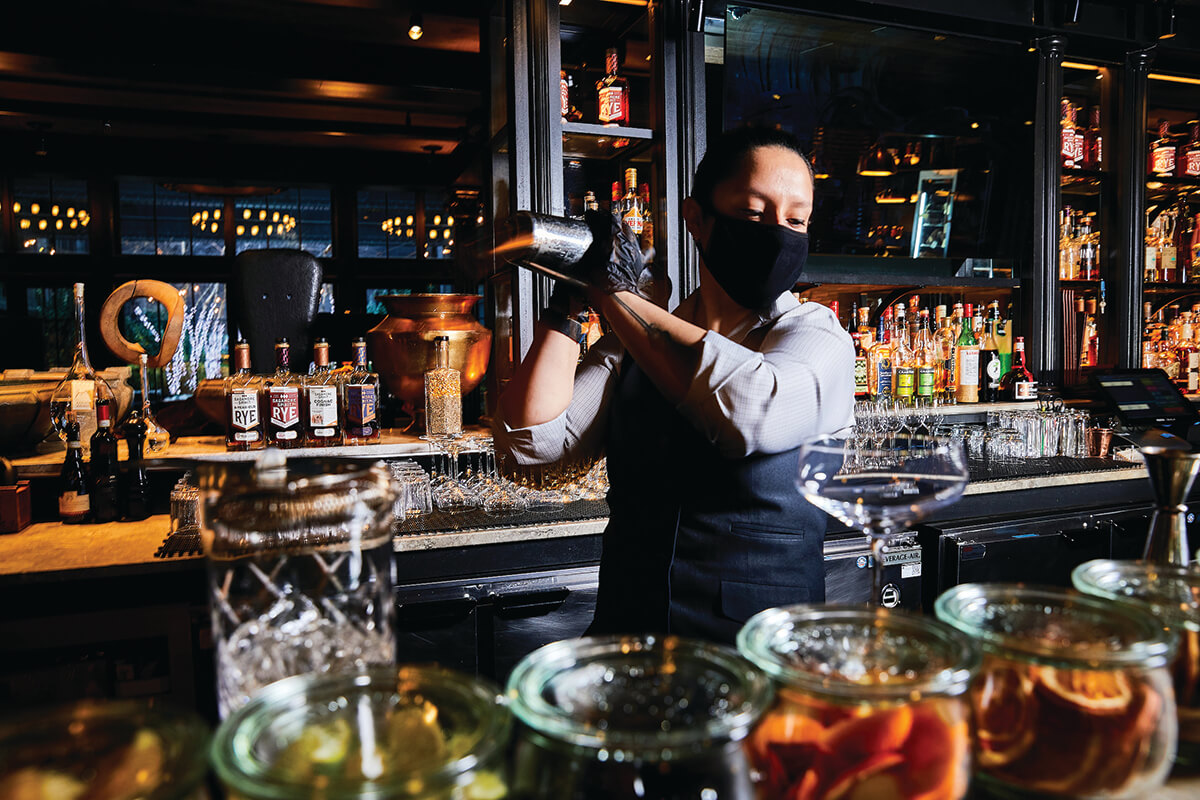
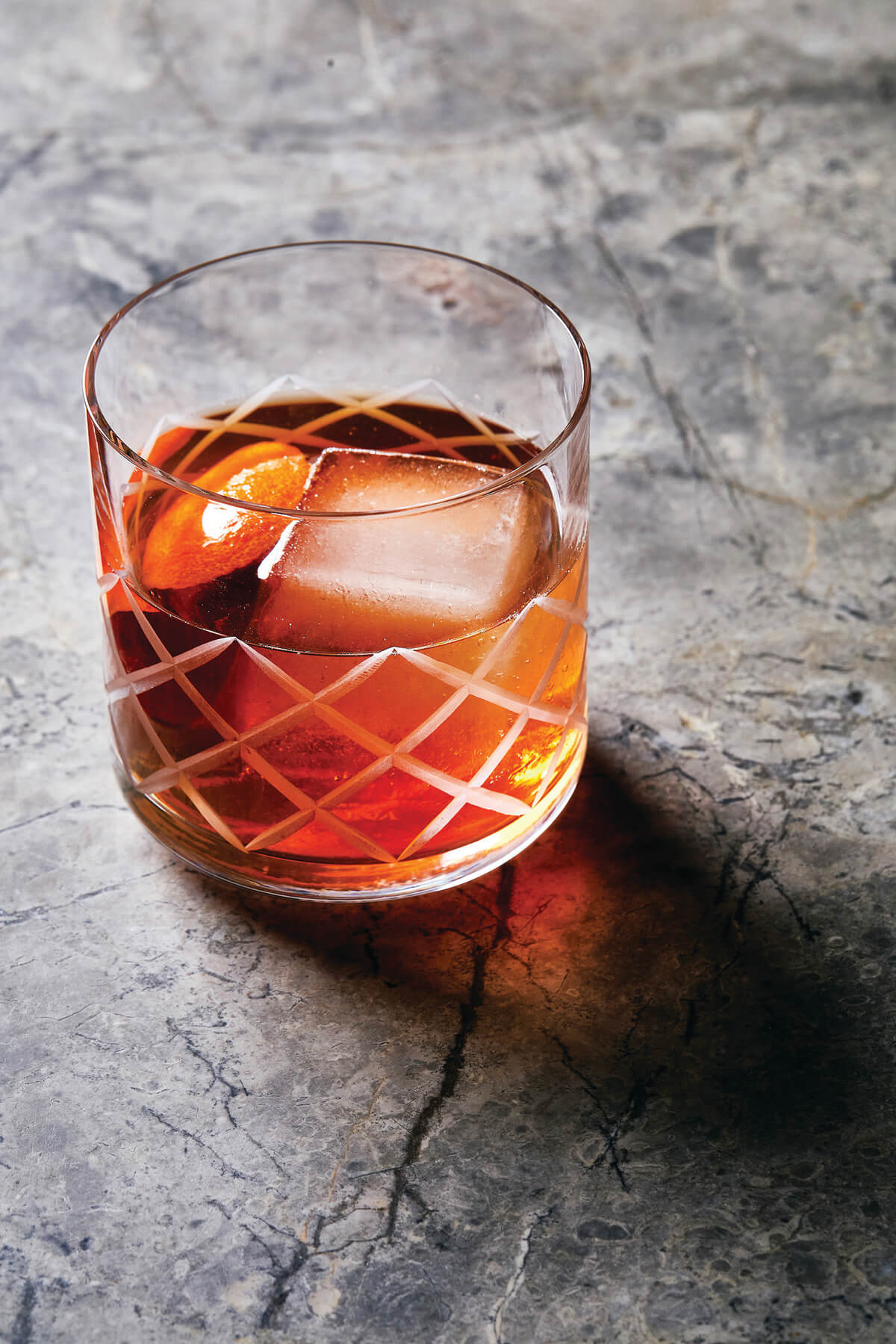
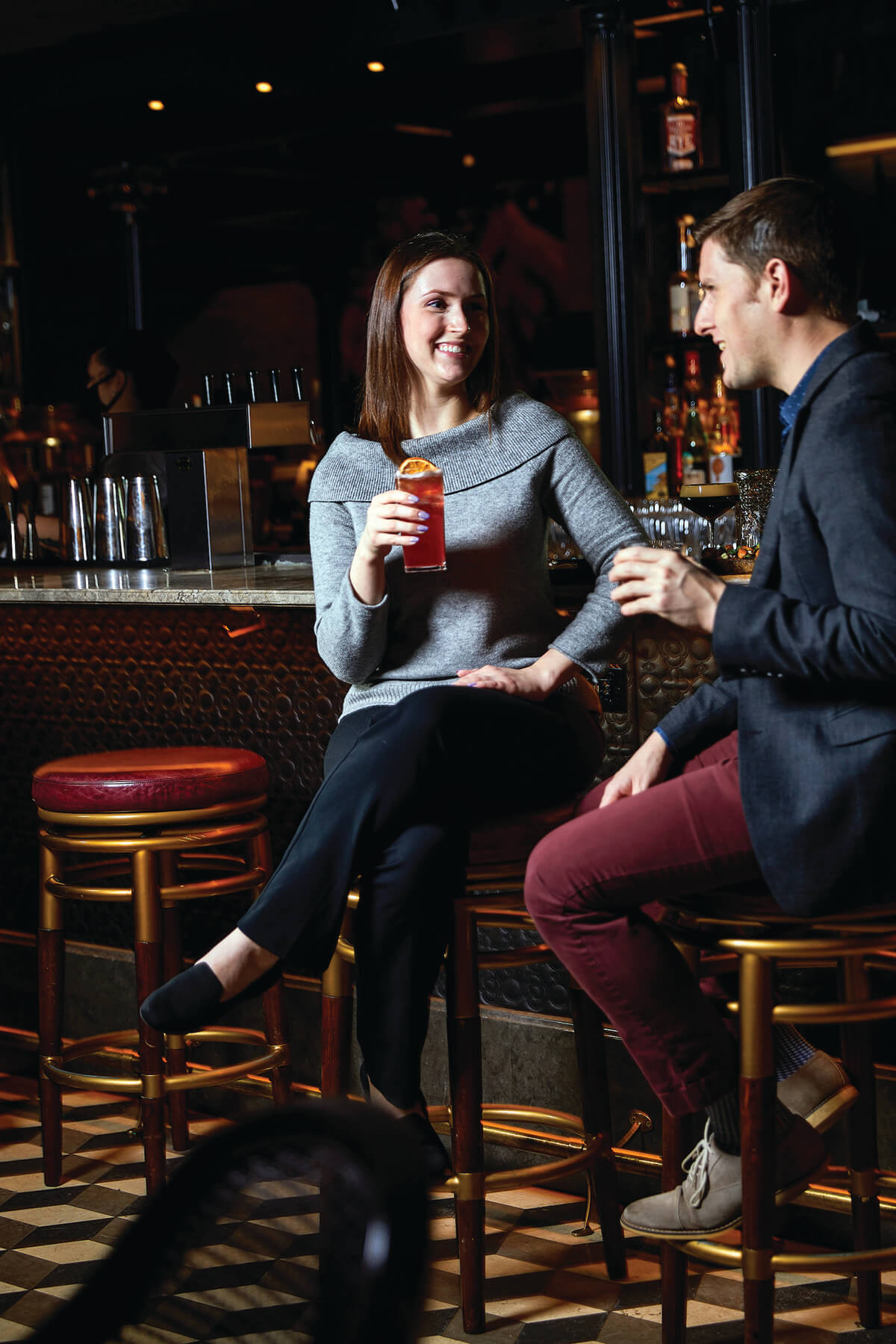

→ Rec Pier Chop House
Fells Point
Anyone who’s traveled for business knows that the road can be a lonely place. Perhaps that’s one reason why many solo diners choose to eat at hotel bars.
“Because it’s a hotel we do get more individuals that come in and eat at the bar,” says Rec Pier Chop House manager Gabriella Taylor.
The upscale steakhouse is located inside the Sagamore Pendry Baltimore hotel in Fells Point. Some get the tasty, pricey steaks that emerge from new executive chef Colin King’s kitchen, but others order lighter.
“We do get a lot of people that won’t eat a full three-course meal,” Taylor says. “They’ll order a couple [antipasti], or a side and an entree.”
There are two TV screens behind the gorgeous Patrick Sutton-designed bar, but often solo diners are in the mood to chat, says bartender Daniel Summers.
“A lot of times they might be interested in something they can do [in the area], or they’re just blowing off steam because they’re finally getting away,” he says. “It doesn’t bother me at all. Personally, when I go out to drink, I want to be able to eat something. I think they go hand in hand. It’s a better experience overall for the guests.”
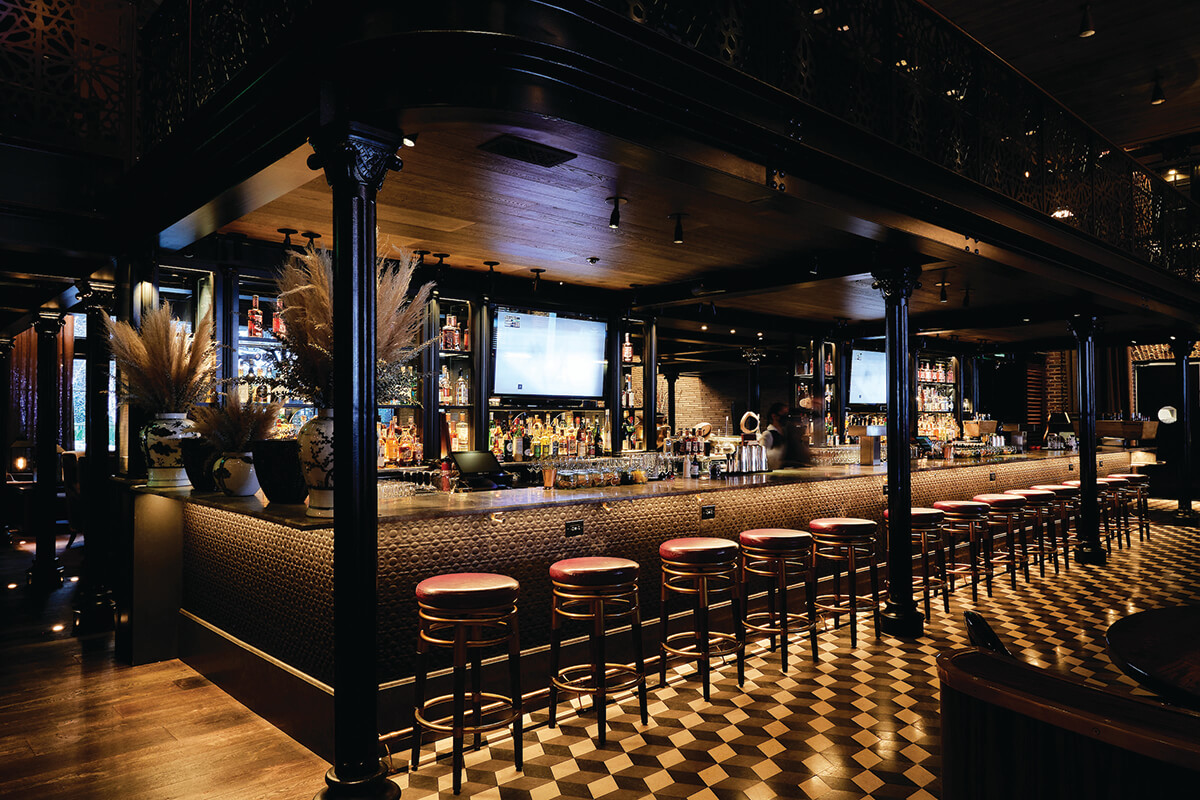
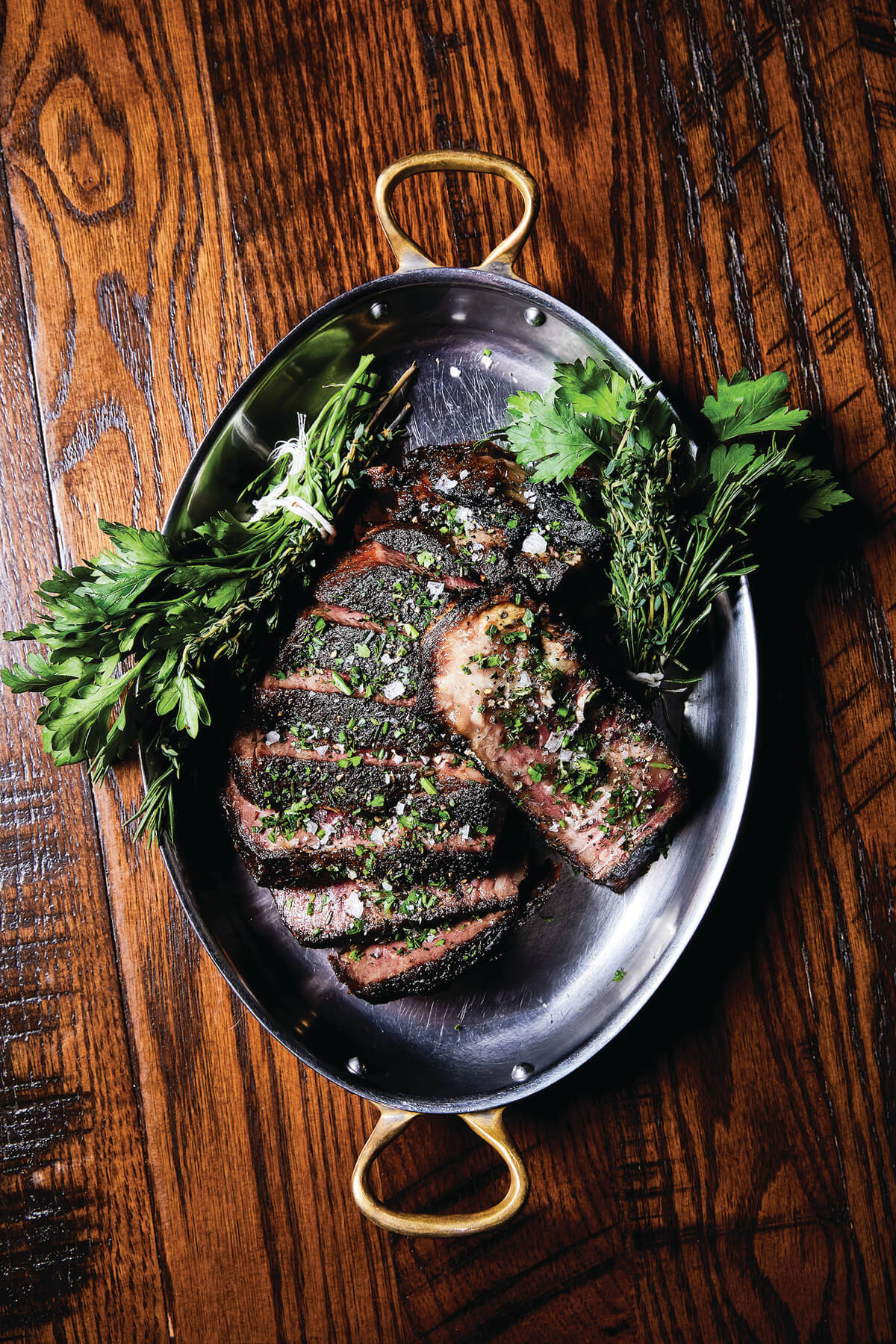
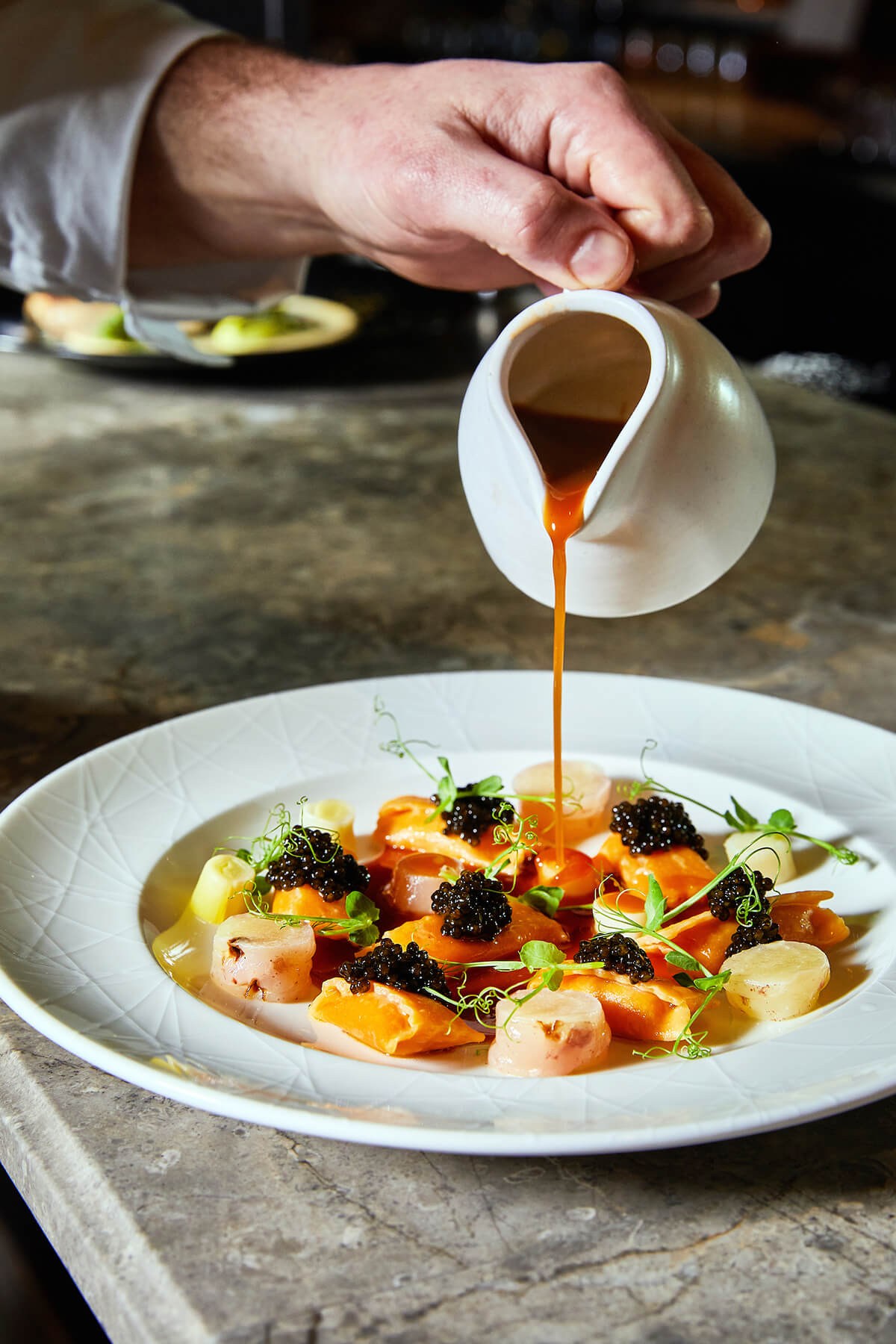
→ Tark’s Grill & Bar
Green Spring Station
As it is almost every night, the bar at this wildly popular restaurant in Green Spring Station is bustling. Every seat at the bar is taken, and almost everyone has both a plate of food and a glass of wine in front of them. Conversations, among other things, are flowing. The crowd skews older, and couples who look like they’re dating sit intertwined with those who seem as if they’ve been married for decades.
“Tark’s is a very approachable restaurant still with an upscale nature, so a lot of people do come there for first dates. We hear that a lot,” co-owner Gino Cardinale says. “It’s a little more relaxed. Bar dining is good for that. You can have a nice dinner and a drink and interact, and you still have other people around you, and it doesn’t seem like you’re too formal.
“Bar dining also works for people who have been together for a very long time. They want to come out and have a good time. They’ve been together for 30 years and they’ve already done all the romantic stuff.”
The restaurant is a favorite of WJZ anchor Marty Bass and his wife, Sharon, who live about 10 minutes away and eat at the bar once every week and a half or so.
“It’s a very relaxed way to dine,” he says. “Generally speaking, you meet like-minded people, people who like the casual ambiance of a bar. Bartenders are fascinating people. You always get into great conversations, whether it be about craft cocktails or whatever’s happening that day.”
Although the bar is first come, first served, the restaurant will accept reservations for the high-top tables in the bar area. They’re quite popular, Cardinale says, because they combine elements of both the bar and the dining room.
The restaurant features a large and diverse menu. Among Bass’s favorites are the French dip sandwich and the seafood Cobb salad, which he calls a Cobb salad “on steroids.”
“Back that up with a cold beer and you’re living large,” he says. “Tark’s is beautiful because it’s organic. We don’t really plan [our visits] there. It just happens. And that’s another joy of eating at the bar.”
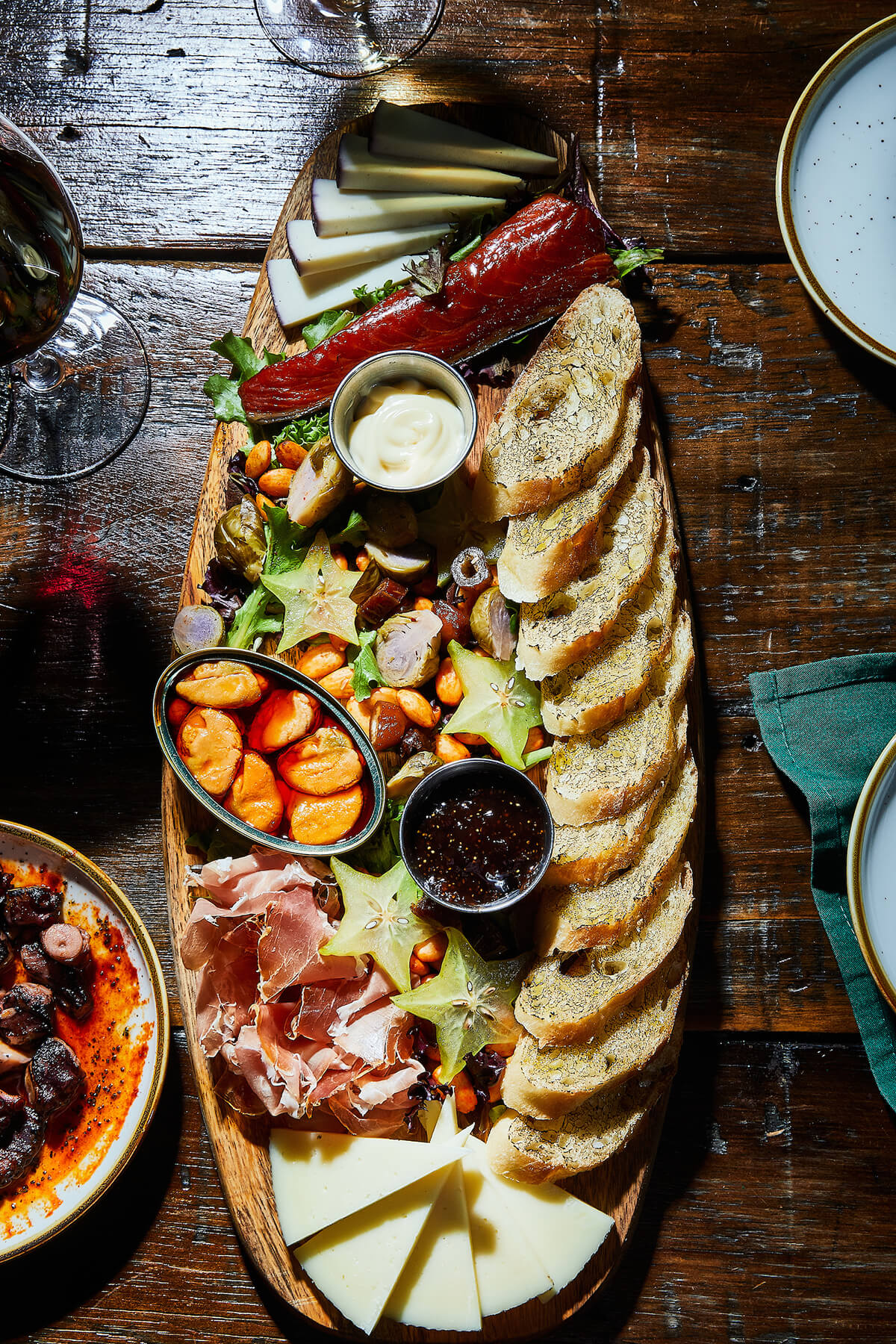
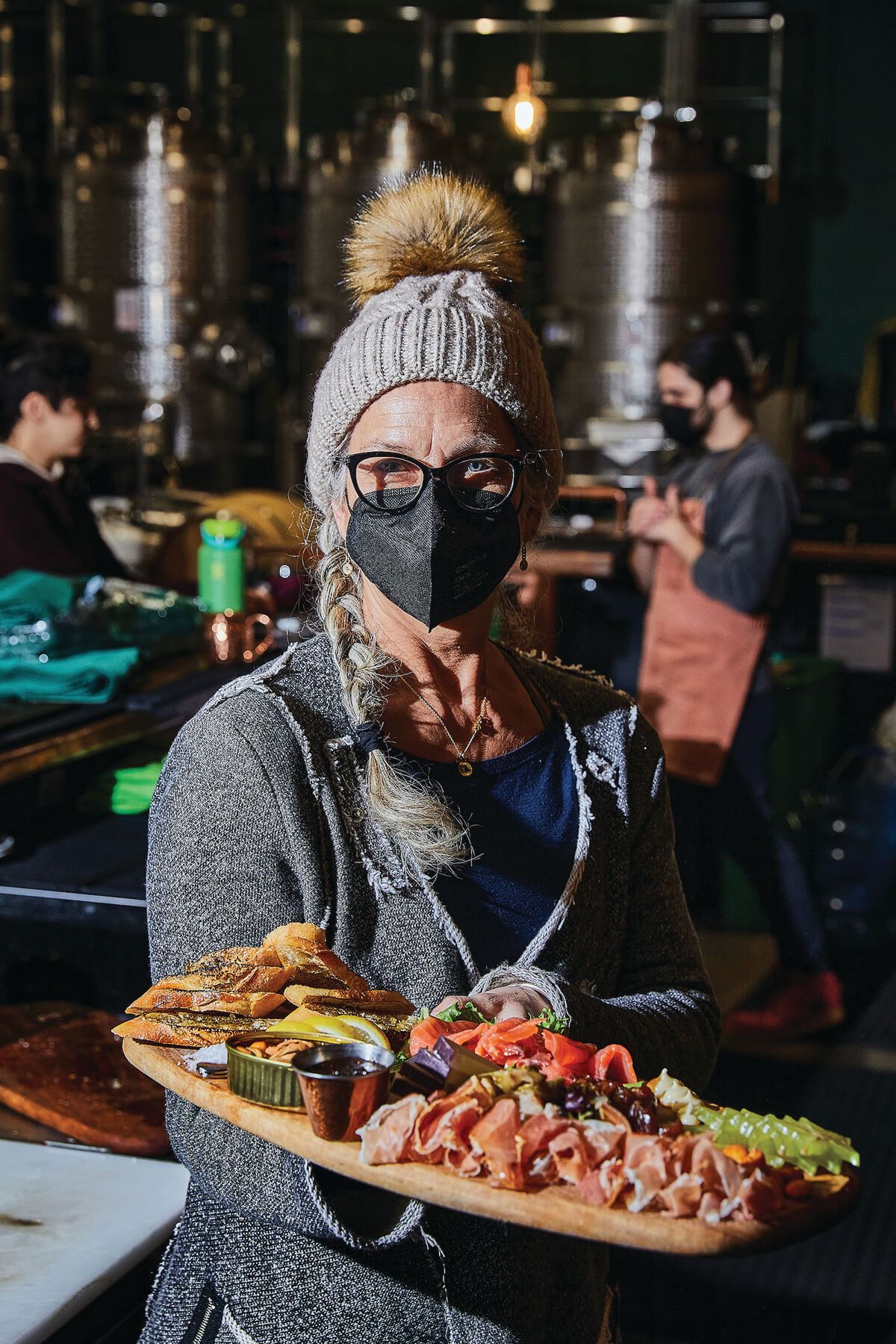
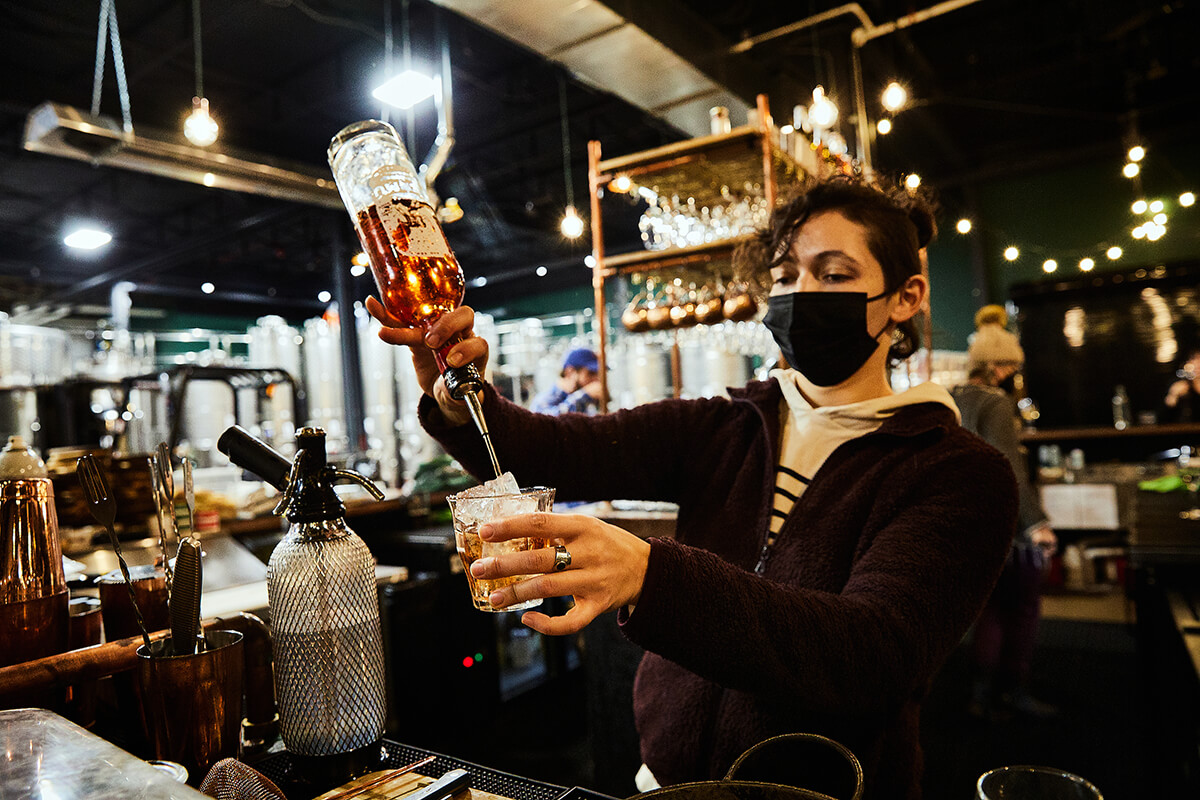
→ The Wine Collective
Hampden
Does any food pair better with wine than a charcuterie board? At The Wine Collective inside Union Collective in Hampden, plates of sliced meats, cheeses, and smoked fish are the top-seller, and many people enjoy eating them at the bar.
“One of our ideas behind the menu is we are inspired by Spanish [restaurants],” says owner Enrique Pallares. “All the food we serve is trying to bring the octopus and the Iberico ham from the white tablecloth to the bar top, to make it a casual activity that doesn’t sacrifice quality.”
The restaurant serves some of the best tinned fish in the city. Many of its foods are imported, while others are hyper-local. The torched bread on the charcuterie plate is made at Cunningham’s Bakery a few miles away.
The actual bar in the cavernous, warehouse-like space is a beauty; it’s copper-topped, and its face is decorated with green tiles imported from Portugal.
“The paradox of the outdoor being a very industrial, somewhat grungy feel, then you come inside and see all this stainless steel and wood and copper, it’s sort of a metaphor for the heart of gold of Baltimore,” Pallares says.
Rules for Eating at the Bar
- Don’t be a space invader: If you’re seated at the bar, the stool next to you isn’t for your purse or jacket. Keep your personal belongings in your dedicated space or look for a handbag hook under the bar.
- Mute your phone: Even if you’re dining by yourself, your phone should always be muted. If you need to make or take a call, step outside.
- Be cordial: You’re in closer quarters with fellow patrons than you are in the dining room, so this is not the time to spout off your political opinions.
- Hands off: Not everything on the bar is yours to touch. If there’s a garnish or fruit bowl, don’t reach into it and help yourself to an olive. If you want something, ask your bartender.
- Gauge your gab: Don’t assume that the person next to you wants to talk. Gauge their desire to gab and go from there.
- Don’t loom: Whenever possible, if someone is eating at the bar, don’t stand behind them and try to order a drink. Respect a diner’s personal space.
- Make room: If you’re in the middle of a row and two people are looking for stools together, slide down one if you can.
- Tip big: Tip your bar staff as generously as you would a server in the dining room.
